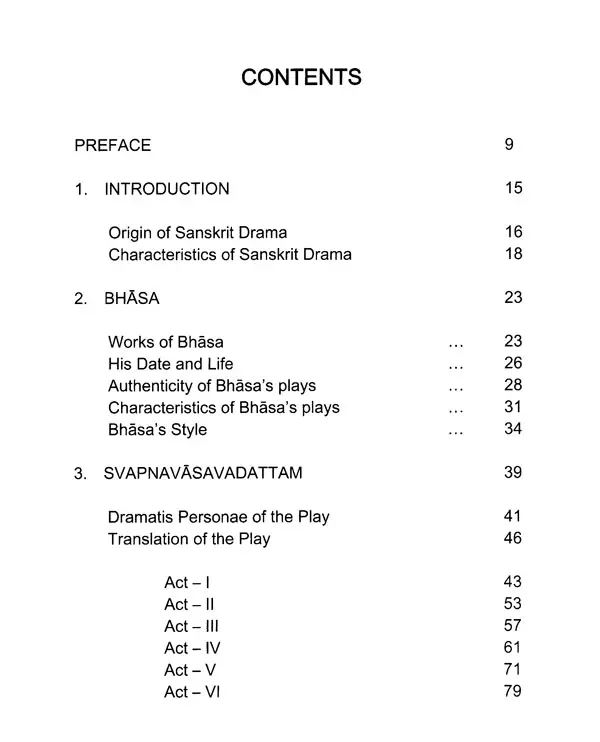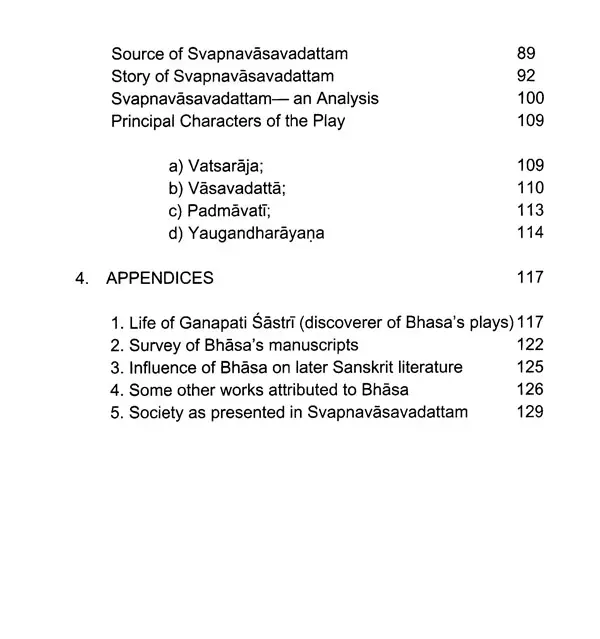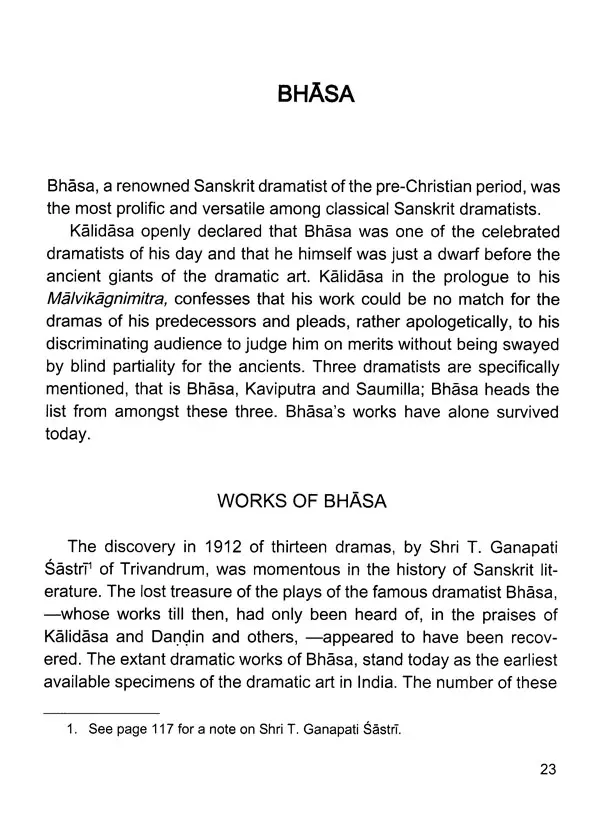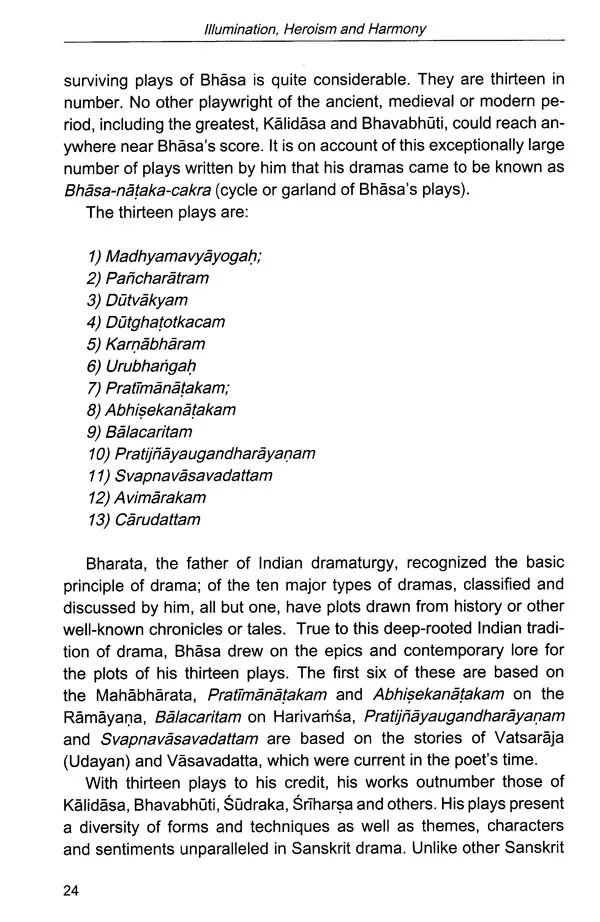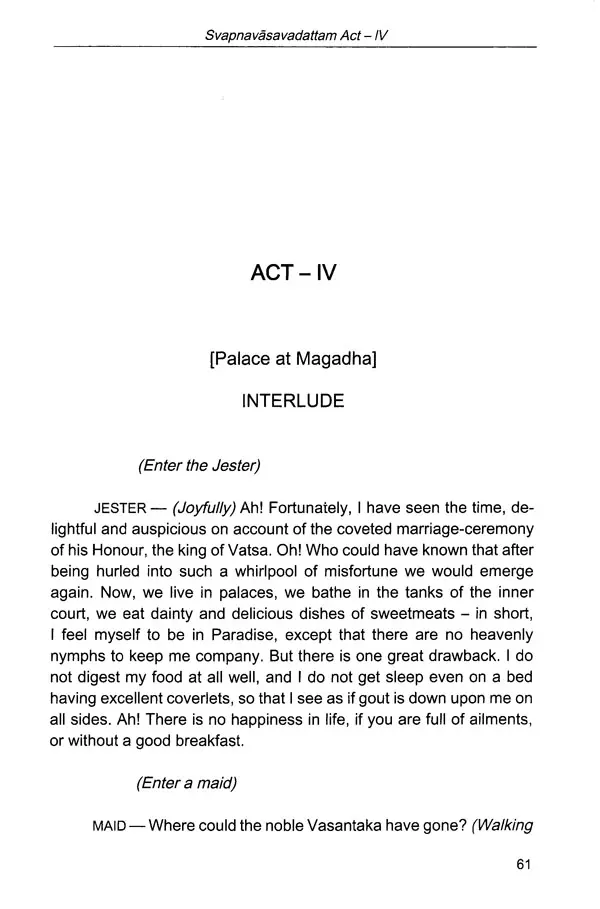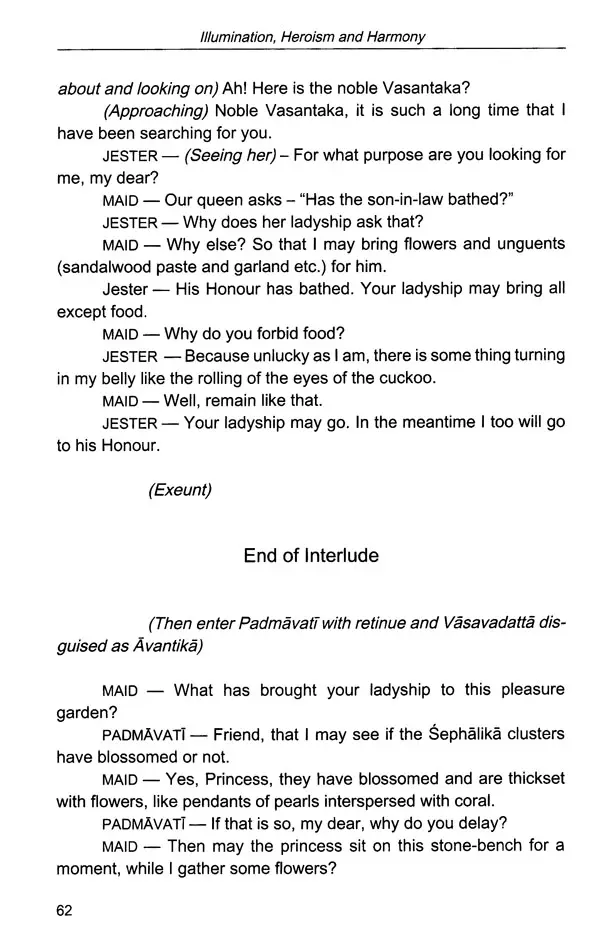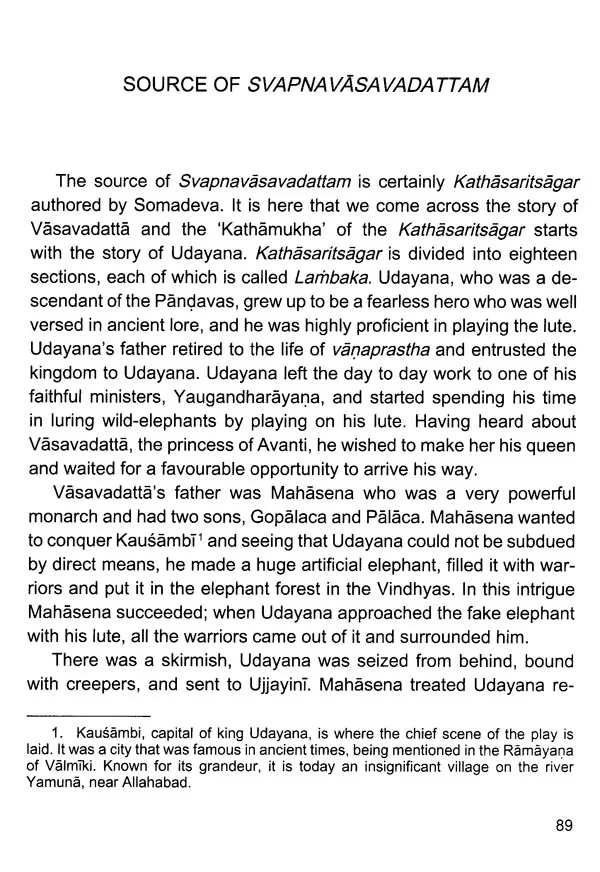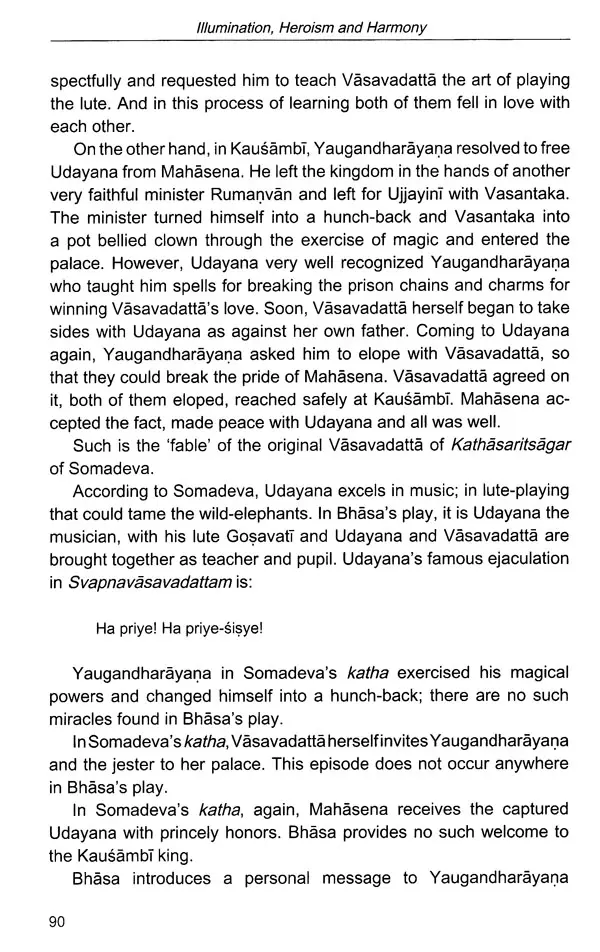
Svapnavasavadattam or Dream-Reality of Vasavadatta (Value- Oriented Education Series)
Book Specification
| Item Code: | UAJ671 |
| Author: | Kireet Joshi |
| Publisher: | Shubhra Ketu Foundation and The Mother’s Institute of Research, Delhi |
| Language: | English |
| Edition: | 2011 |
| ISBN: | 9788189490172 |
| Pages: | 134 |
| Cover: | PAPERBACK |
| Other Details | 9.00 X 6.00 inch |
| Weight | 260 gm |
Book Description
The task of preparing teaching-learning material for value-oriented education is enormous.
There is, first, the idea that value-oriented education should be exploratory rather than prescriptive, and that the teaching-learning material should provide to the learners a growing experience of exploration.
Secondly, it is rightly contended that the proper inspiration to turn to value-orientation is provided by biographies, autobiographical accounts, personal anecdotes, epistles, short poems, stories of humour, stories of human interest, brief passages filled with pregnant meanings, reflective short essays written in well-chiselled language, plays, powerful accounts of historical events, statements of personal experiences of values in actual situations of life, and similar other statements of scientific, philosophical, artistic and literary expression.
Thirdly, we may take into account the contemporary fact that the entire world is moving rapidly towards the synthesis of the East and the West, and in that context, it seems obvious that our teaching-learning material should foster the gradual familiarisation of students with global themes of universal significance as also those that underline the importance of diversity in unity. This implies that the material should bring the students nearer to their cultural heritage, but also to the highest that is available in the cultural experiences of the world at large.
Fourthly, an attempt should be made to select from Indian and world history such examples that could illustrate the theme of the upward progress of humankind. The selected research material could be multi-sided, and it should be presented in such a way that teachers can make use of it in the manner and in the context that they need in specific situations that might obtain or that can be created in respect of the students.
The research team at the Sri Aurobindo International Institute of Educational Research (SAIIER) has attempted the creation of the relevant teaching-leaming material, and they have decided to present the same in the form of monographs. The total number of these monographs will be around eighty to eighty-five.
It appears that there are three major powers that uplift life to higher and higher normative levels, and the value of these powers, if well illustrated, could be effectively conveyed to the learners for their upliftment. These powers are those of illumination, heroism and harmony.
It may be useful to explore the meanings of these terms-illumination, heroism and harmony-since the aim of these monographs is to provide material for a study of what is sought to be conveyed through these three terms. We offer here exploratory statements in regard to these three terms.
Illumination is that ignition of inner light in which meaning and value of substance and life-movement are seized, understood, comprehended, held, and possessed, stimulating and inspiring guided action and application and creativity culminating in joy, delight, even ecstasy. The width, depth and height of the light and vision determine the degrees of illumination, and when they reach the splendour and glory of synthesis and harmony, illumination ripens into wisdom. Wisdom, too, has varying degrees that can uncover powers of knowledge and action, which reveal unsuspected secrets and unimagined skills of art and craft of creativity and effectiveness.
Heroism is, essentially, Inspired force and self-giving and sacrifice In the operations of will that is applied to the quest, realisation and triumph of meaning and value against the resistance of limitations and obstacles by means of courage, battle and adventure. There are degrees and heights of heroism determined by the intensity, persistence and vastness of sacrifice. Heroism attains the highest states of greatness and refinement when it is guided by the highest wisdom and inspired by the sense of service to the ends of justice and harmony. as well as when tasks are executed with consummate skill.
Sanskrit drama is in a special sense universal. Some of it is concerned almost wholly with the permanent seats of joy and grief in the human psyche, to the exclusion of most other topical, passing verities of life. Moreover, it commits itself to a supremely satisfying pleasure principle, and to an exultant, optimistic vision of life, without in any manner vulgarizing the passions or being crudely sentimental and unrealistic. Since it is grounded upon an extraordinarily refined aesthetic taste it also contributes to a chastening of sensibility. Its masterful fusion of prose and poetry, of the temporal and universal, of values of joy and duty, of worldliness and otherworldliness, could be one of the means to a profound education both moral and aesthetic for the modern man.
The Indian mind has always been religious without being dogmatic, so Aesthetics and Poetics have no quarrel with Ethics and Philosophy in ancient India. Drama very much accepted this relationship and its duty towards religion and morality. It aimed at removing evil and vindicating truth, beauty and goodness. And in this task, it was more effective than the other art forms in so far as it was the only audio-visual art (drsyam sravyam ca), and its representation of life, therefore, more immediate and persuasive.
The great Indian classical plays, and the monumental dramatic treatise, Natya Sastra, give the impression of a highly sophisticated and self-contained aesthetic world. The intellectual and cultural milieu reflected in the traditional literature also supports a similar view, encouraging one to visualize a harmonious, settled, classically controlled universe. Historical researches in modern times have, however, revealed a different picture. For all its solid facade of established conventions and values, the Indian subcontinent was experiencing a series of upheavals at the social, political and philosophical levels during the period when Sanskrit drama was attaining maturity. The Indian people did, of course, succeed in maintaining a certain steadiness and stability in respect of their culture through all the changing dimensions of their historical life, but they did not really allow themselves to sink into a state of servile conformism. While the bold experimentalism and innovativeness in the realms of ancient culture and politics have received some attention in the post-independence period, the modalities and mores in the sphere of literary appreciation have, for the most part, remained unchanged. Literary criticism is yet to respond adequately to the controlled dynamism of life which ancient Sanskrit plays so beautifully and variously portray.
Dramatic literature occupies a significant place in the domain of literary output. Not only does it occupy a large space in the libraries, but also has its deep and sacred station in the heart of millions.
**Contents and Sample Pages**
